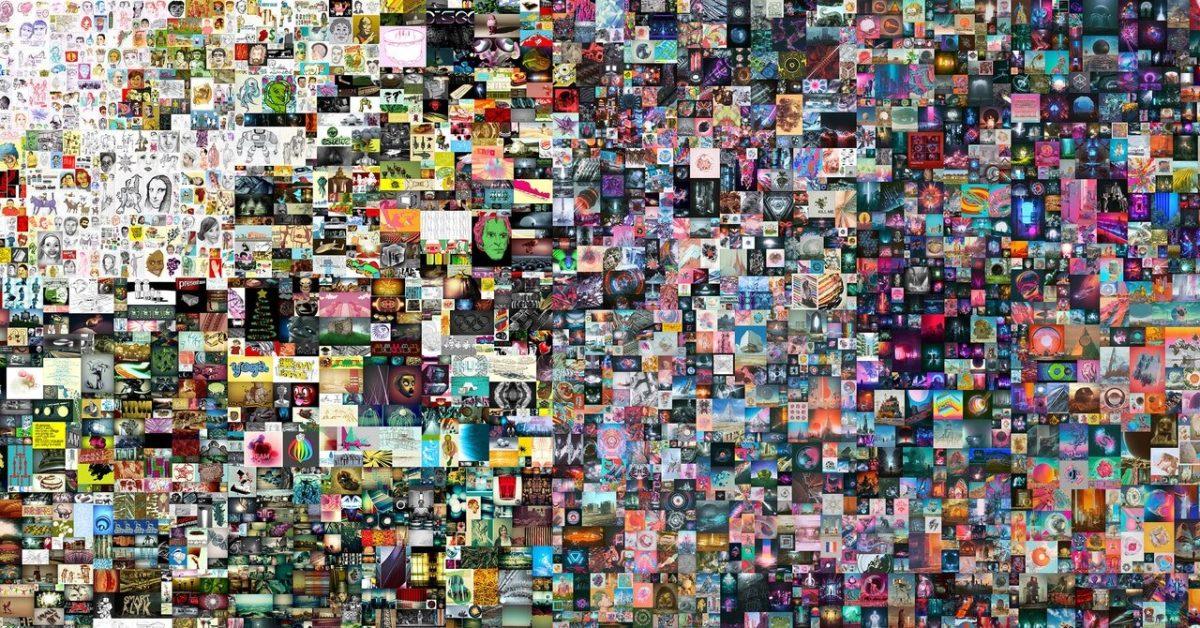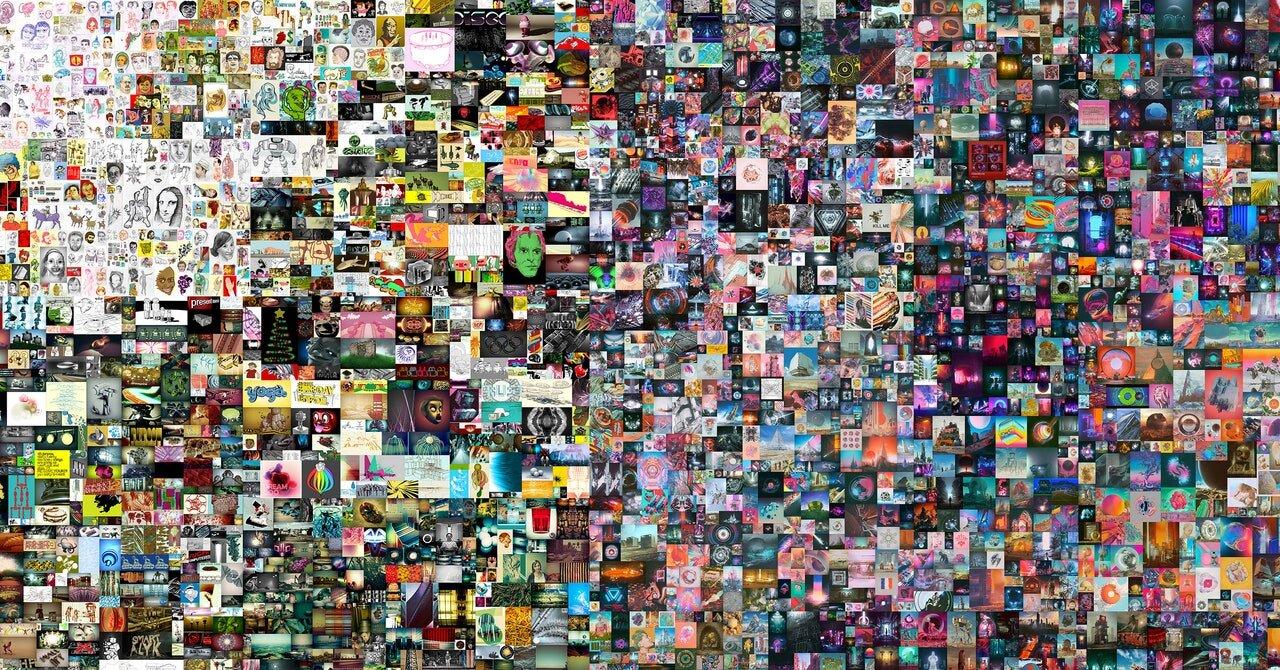Digital art has been taken to a whole new level thanks to the umbrella concept NFT. Not only has this new form of cryptographic token allowed artists to make a remarkable amount of money, but it also has caught the eyes of those who believe it can make it a “get rich quick” scheme. However, NFT does come with concerns, such as not lasting forever or being stolen, which makes it difficult to have it be considered a long-lasting trend in the art collection world.
NFT stands for a non-fungible token and is described as a cryptographic token that is not mutually interchangeable—meaning that it cannot be replaced for something else and is unique. As a result of NFT, digital artists have used NFT to create and sell art that is considered to be one-of-a-kind pieces that can be bought or traded.
Beeple’s $69 million NFT collage
According to Mitchell Clark, a news writer for The Verge, “most NFTs are part of the Ethereum blockchain,” which is a form of cryptocurrency. But, what exactly are people buying and why? Those who can afford it can buy anything digital, such as artwork. For example, digital artist Beeple, auctioned a digital art piece at Christie’s, an auction company, for $69 million, which is $15 million more than Monet’s painting that was sold in 2014. Those who are buying NFTs believe that the artwork is the future for fine art collecting, as prices like Beeples, show a significant amount of value in the digital collector world.
What can be challenging for NFT pieces to become the new form of fine art collecting is the possible chance that the data itself can deteriorate, causing it to essentially “fall apart”. Data degradation, also known as bit rot, is the process in which digital data becomes obsolete and cannot be accessed. “…image quality deteriorates, file formats can’t be opened anymore, websites go down, people forget the password to their wallets,” stated Clark. The digital artwork that is being bought technically has no guarantee for lasting as long as people may want it to. Taking data rot into consideration, this makes it difficult for NFT artwork to be a new version of a fine art collection as one’s collection could not exist in ten years.
As NFT artwork profit began to skyrocket, Youtuber Logan Paul immediately jumped to take advantage of the lucrative opportunity NFT can offer. “He sold NFT video clips, which are just clips from a video you can watch on Youtube anytime you want, for up to $20,000.” wrote Clark. Logan Paul saw this as a financial opportunity, as an artist would, but it is clear that it was strictly for a paycheck. Actions like his make it frustrating for those who take artwork seriously and should be considered as a concern for the longevity and seriousness of the NFT marketplace.
There will be more people like Paul who will take advantage of the NFT umbrella for money. This isn’t to say NFT shouldn’t be used to make money; NFT is an ability to make money for those pursuing art as a career, not for Youtubers to take advantage of their subscriber’s loyalty for a quick buck.
NFT artwork can also be stolen. According to Bijan Stephen, a reporter for The Verge, some artists are struggling with theft and impersonation. Artists believe that artwork and the artist need to be verified before placing pieces on the market, but this is not always the case. “On OpenSea and Raible, two major NFT platforms, you don’t have to verify you own something before putting it on the blockchain. Verifying yourself on these platforms is also not difficult…” wrote Stephen. Though the artwork on marketplaces may appear fine and unique, there is a possibility the art pieces people are buying are stolen and not from the original artist. This particular challenge makes it difficult for this to become a long-lasting trend for the world of art, as artists and sometimes consumers are particular about copyright and where their art is coming from.
Being a part of NFT is a great opportunity for digital artists; it allows them to market themselves and pursue their dreams. However, NFT artwork being bought should not be considered a new form of collecting fine art. Just because some of the art produced by people like Logan Paul is purchased, it should not be considered ‘fine art. Overall, the NFT artworks only rely on the value given by those who purchase them. There is no guarantee their pieces will be accessible in the future due to bit rot and the evolution of technology. Though physical art pieces can be damaged, they can still be admired whereas inaccessible, and possibly stolen data, can’t be.





![[Both photos courtesy of sonoma.edu]
Ming-Ting Mike Lee stepped in as the new SSU president following Sakakis resignation in July 2022](https://sonomastatestar.com/wp-content/uploads/2024/04/CC4520AB-22A7-41B2-9F6F-2A2D5F76A28C-1200x1200.jpeg)



























